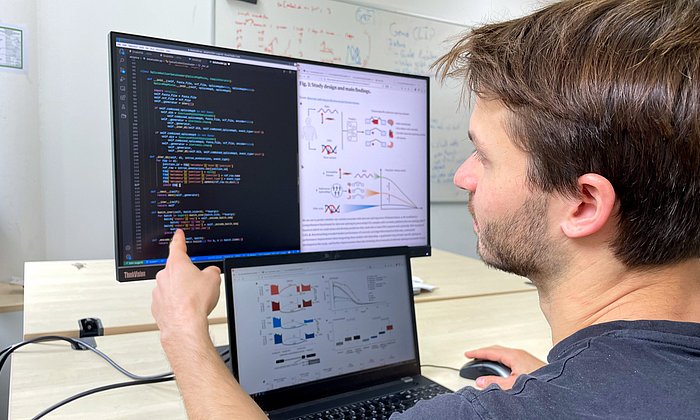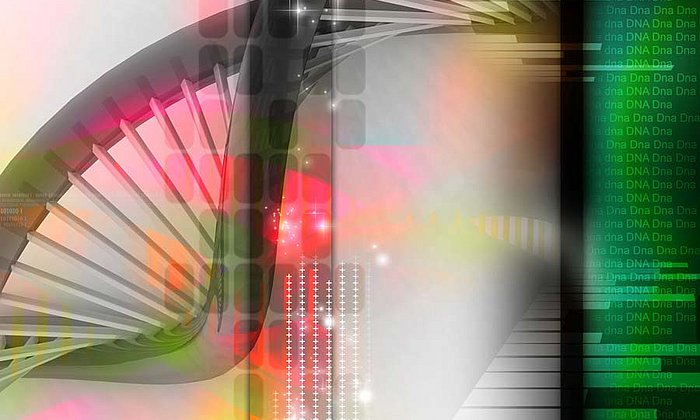Study examines data from over 1,500 people affected by rare diseases
34 new genetic diseases identified

Rare diseases require multidisciplinary clinical expertise and comprehensive genetic diagnostics for optimal care. The three-year TRANSLATE NAMSE innovation fund project, which began in late 2017, aimed to improve care for affected individuals through modern diagnostic concepts. Researchers from 16 university hospitals utilized exome sequencing (ES), a method that encodes all sections of our DNA, for their investigations.
The ES data of 1,577 patients, including 1,309 children, who were presented at rare disease centers as part of TRANSLATE NAMSE, were analyzed. The project's goal was to identify the disease causes in as many patients as possible using innovative examination methods.
Changes discovered in 370 genes
A genetic cause for the rare disease was identified in 499 patients, 425 of whom were children. In total, researchers found changes in 370 different genes. "We are particularly proud of the discovery of 34 new molecular diseases, which exemplify knowledge-generating patient care at university hospitals," said Dr. Theresa Brunet from the Institute of Human Genetics at TUM's Klinikum rechts der Isar, one of the study's first authors.
"We will examine the affected individuals for whom we have not yet been able to find a diagnosis as part of the model project Genome Sequencing, or MVGenomSeq for short," says Dr. Tobias Haack, Deputy Director of the Institute of Medical Genetics and Applied Genomics at the University Hospital of Tübingen. The MVGenomSeq builds on the success of the TRANSLATE NAMSE project and enables the analysis of clinical genomes at university hospitals throughout Germany. Unresolved cases can also be investigated in follow-up studies using new methods such as long-read sequencing, which allows for the analysis of much longer DNA fragments. "Long-read sequencing enables us to find genetic changes that are difficult to detect, and we anticipate making further diagnoses using this method," said Dr. Nadja Ehmke, Head of Genome Diagnostics at Charité's Institute of Medical Genetics and Human Genetics, and one of the study's senior authors.
Standardized processes established
As part of the TRANSLATE-NAMSE project, standardized procedures for extended genetic diagnostics in suspected rare diseases were established, based on interdisciplinary case conferences. These were incorporated into standard care after the project's completion. "Interdisciplinary case conferences play a crucial role for those affected. They enable comprehensive clinical characterization, which is relevant for phenotype-based evaluation of genetic data. Additionally, detected variants can be discussed in an interdisciplinary context," said Dr. Magdalena Danyel, also a lead author, who works as a specialist at the Institute of Medical Genetics and Human Genetics and is a fellow of the Clinician Scientist Program at the Berlin Institute of Health (BIH) at Charité - Universitätsmedizin.
AI recognizes rare diseases by facial features
The researchers also investigated whether the supplementary use of machine learning and artificial intelligence (AI) tools could improve diagnostic effectiveness and efficiency. To this end, the "GestaltMatcher" software, which uses computer-assisted facial analysis to aid in diagnosing rare diseases, was tested on a broad scale for the first time. The study utilized sequence and image data from 224 individuals who had consented to the computer-assisted analysis of their facial images, demonstrating that the AI-supported technology provides a clinical benefit.
"GestaltMatcher is like an expert opinion that we can provide to any healthcare professional in seconds. Early diagnosis is essential for those affected by rare diseases and their families. The supportive use of the software by pediatricians could be beneficial in detecting abnormalities during the U7 screening at 21 to 24 months or U7a at 34 to 36 months," said corresponding author Prof. Peter Krawitz, Director of the Institute for Genomic Statistics and Bioinformatics (IGSB) at the University Hospital Bonn (UKB), where the GestaltMatcher AI is being developed. The software and app can be made available to all doctors through the non-profit organization Arbeitsgemeinschaft für Gen-Diagnostik e.V. (AGD).
Schmidt, A., Danyel, M., Grundmann, K. et al. Next-generation phenotyping integrated in a national framework for patients with ultrarare disorders improves genetic diagnostics and yields new molecular findings. Nat Genet (2024). DOI:10.1038/s41588-024-01836-1
-
In addition to the Klinikum rechts der Isar of the Technical University of Munich (TUM), Charité-Universitätsmedizin Berlin, University Hospital Bonn (UKB) and University of Bonn, University Hospital Düsseldorf, Ruhr University Bochum, University Hospital Dresden, University Hospital Essen, University Hospital Halle, University Hospital Hamburg Eppendorf, University Hospital Heidelberg, University Hospital Schleswig Holstein, LMU Klinikum München, University Hospital RWTH Aachen, University Hospital Leipzig, University Hospital Tübingen and Stellenbosch University, Cape Town, South Africa were involved.
-
The study was funded by the Innovation Fund.
Contacts to this article:
Dr. Matias Wagner
Klinikum rechts der Isar
Technical University of Munich
Institute of Human Genetics
Tel. +49 4140 6381
matias.wagner@mri.tum.de


